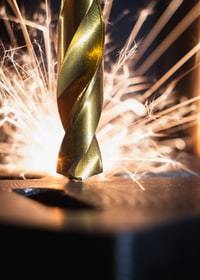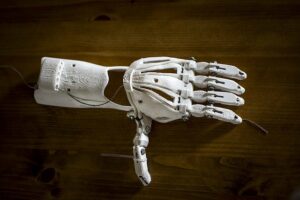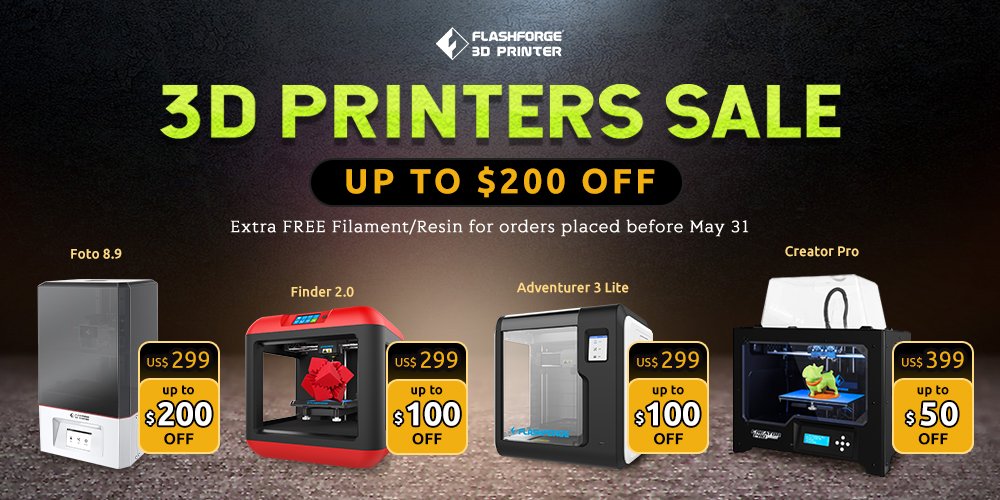Additive manufacturing (AM), often called 3D printing, uses a computer-aided design (CAD) file to precisely control layer-by-layer, or point-by-point, material buildup into three-dimensional objects. AM processes like 3D printing can create parts and components that are lighter, less expensive, complex in shape, and needless secondary machining. As a result, additive manufacturing can speed up the product design to the manufacturing process, reduce supply chain costs, and shorten the time to market.

AM can manufacture end-use parts, tooling and patterns, fixtures, jigs, fixtures, and custom-manufactured products. Manufacturers are finding applications for AM in manufacturing aircraft, medical devices, hearing aids, body parts, motorcycles, and more.
The technology can also be used to mass-produce metal objects. Norsk Titanium, a commercial-scale producer of metal powders and a provider of plasma torch technology, is taking metal powders to new places, including aerospace and parts production for the automotive industry. Traditional manufacturing processes for plastic or metal parts rely on subtractive creation. A material (typically a metal) is removed from a more significant piece. This process is costly and time-intensive, resulting in tremendous material waste.
1. AM differs from traditional methods because the design is built additively, creating the new part layer by layer. As the product takes shape, the model can be inspected and modified, eliminating the need to throw away material.
2. For example, AM defines the engine block and cylinder head of a V-6 engine, generating a high-quality surface finish with significantly less waste than traditional machining.
3. The AM process generates a digital file that controls the printer and can be viewed as computer-aided manufacturing (CAM) file.
However, the product is not manufactured through a computer but is built from many small layers. For example, General Electric (G.E.) reduced part costs and cycled time by 40 percent using additive manufacturing. Additive manufacturing produces parts directly from digital models (i.e., CAD files) – producing single parts quickly and economically, one at a time (i.e., not in batches), making the process more affordable and sustainable.

Additive manufacturing is sometimes referred to as “3D printing” or “rapid prototyping. The technology can vastly improve manufacturing processes by eliminating traditional techniques’ design constraints and material waste like casting or machining.
Ultimately, AM could produce parts energy efficiently that meet or exceed the functional requirements of existing products yet weigh far less. Today’s AM technologies benefit critical economic sectors, from buildings to aerospace and defense (A & A&D).
Applications include rapid prototyping, tailored medical prosthetics, on-site part repairs, and customized transportation parts. Typically, these applications involve one or a few parts, which are needed in small volumes and don’t require as many customization options as mass manufacturing.
AM technologies are critical for AM technologies; the U.S. is racing to claim early market leadership, especially in the A & A & A & A&D sectors. And there are numerous applications that we are only starting to fathom. And mass customization for vehicles and consumer products.
3D printed Shipboard components and the development of such new parts as the Rolls-Royce Trent XWB jet engine’s “Core25” compressor, an AM-made part with a complex, precision-machined, high-temperature, nickel-based superalloy.

Tailored Medical Prosthetics
3D printing can create designed medical prosthetics – quickly and cheaply. And low-cost, customized solutions for engineers and architects. However, AM’s potential may soon extend far beyond these applications.
For example, the Department of Energy’s Argonne National Laboratory has developed a method to convert solar power into a laser beam that can etch three-dimensional materials. The laser-based 3D printing technology could help transform how solar cells and other electronic products are manufactured: aftermarket parts and building-integrated power systems.
Space stations, military ships, and other critical platforms can quickly be part of the solution rather than expensive and time-consuming problems. These solutions can be deployed rapidly and cheaply. They could mean a smaller carbon footprint and more sustainable alternative power.

Because of the way they’re being developed, they could also help the U.S. motor industry regain a competitive advantage in some markets. The Department of Energy, for example, has invested in nano-glass research to develop more efficient solar cells.
A new center of excellence at the National Renewable Energy Laboratory. The Department of Energy’s National Renewable Energy Laboratory will build a center of excellence in additive manufacturing to create new energy technologies. These capabilities will reduce the cost of manufacturing wind turbines, solar cells, electric vehicles, and other renewable energy technologies.
An accelerated effort to create next-generation electronic devices from graphene. On-demand 3D printing techniques and platforms can develop a more productive space economy.
And help reduce the mass and the costs of the equipment and supply chains needed to support human spaceflight. Suppose 3D printing becomes a part of the future of space exploration. In that case, it will require the development of a dedicated and sustainable space industry in low-Earth orbit and beyond.
Systems deployed after a disaster hits multiple locations in the United States or even around the world can be precious, enabling businesses to increase their capacity, improve the reliability of their products, and gain a competitive edge. But most of these systems must be reliable and high-performance for those markets.
Additive Manufacturing Makes Sense
And that’s where 3D printing makes sense. Regarding manufacturing, 3D printing can make it possible to mass-produce higher-quality products in less time and at a fraction of the cost. For instance, companies can use this type of printing to make aerospace components with much greater precision and control, bumping up their quality and, as a result, their value. We’ve just celebrated the 44th anniversary of the Apollo 17 mission, which saw the last astronauts land on the Moon and begin the transition to a space-faring society.

Since then, we’ve been on the cusp of a genuinely space-faring civilization, but we always fall short of our destination for various reasons. He said that companies worldwide are beginning to build these, and the right environment for them to flourish is already in place.
“The commercial launch market is maturing,” he expressed. “The launch cost is coming down, and we expect that to continue. The critical thing for additive manufacturing, for 3D printing, is that the market is here. For years, 3D printing was a technology that seemed to deliver those promises, with manufacturers promising to bring the technology to the masses. However, the reality was that most consumer models were slow and complicated. It sometimes didn’t produce the authentic products its manufacturers had promised.
Additive Manufacturing Is Parts On Demand
Over the last few years, consumer 3D printing has started to take off. For years, 3D printing was a technology that seemed to deliver those promises, with manufacturers promising to bring the technology to the masses. However, the reality was that most consumer models were slow and complicated. It sometimes didn’t produce the accurate products its manufacturers had promised.
Over the last few years, consumer 3D printing has started to take off. If a system breaks down for some reason, it’s not like a technician can drive to many locations and fix the problem. “A couple of the companies developing 3D printing applications for space are very space driven,” states Curran. “They’re looking at it from a practical standpoint.”
“Right now, we’re in the very early stages,’ says Curran. ‘The technology isn’t quite there yet,’ and printing in zero-gravity conditions isn’t as easy as here. ‘The things that we take for granted down here like gravity don’t necessarily exist in space.“They’re more interested in how you can use it in space.
Then you have the people developing it for the ground and trying to find the problems people would have. And then, you will have an iterative cycle between the Earth and space and the potential users. So you’re going to learn from their experience.“And they’re looking to put systems aboard the space station, in the space station itself.” Because space is so tight, a broken part will critically impact science experiments.
“Can this be of use?” declares Curran. “It’s going to sound very space driven now – but the two areas discussed are in space suits and medical.“They’re trying to get some commercial applications, but it’s tough to market them. ”And while they’ve been working on several prototypes and projects, they still have a long way to go before arriving at their final product.“It’s very early to determine what we will do in space.”
“A couple of the companies developing [3D printing] applications for space are very space driven,” states Curran. “It’s very early to determine what we’re going to do in space.
Please leave your comments, questions, or opinions below!
Start [HERE] 3D printing!
This post was proofread by Grammarly!
We would love to know what you think. Would you do us a favor and leave a comment if you have a moment?
It enables us to improve upon everything we do.
We’ve made leaving a comment or question easy! Just go below.
Some of the links in this article are affiliate links. If you were to buy something after clicking on one of these links, I would get a small commission.
Thanks for being part of the community!
Do you have a current fulfillment provider that you aren’t satisfied with? Have you been handling your fulfillment but are growing so much that it’s time to call in the experts?
Either way, picking a fulfillment provider is a big decision for your business that will significantly impact your customers. So, you want to make sure you’re making the right call.
I wanted to send over some resources from my friends at The Fulfillment Lab to help you understand why order fulfillment is so important. And help you choose the right partner.
- 4 Reasons Why eCommerce Businesses Need Effective Fulfillment Services
- What to Look for When Choosing a Fulfillment Company
- 5 Common eCommerce Fulfillment Challenges—and How to Overcome Them
- How Does the Order Fulfillment Process Impact Customer Experience?
The Fulfillment Lab combines marketing and fulfillment at scale, making it possible to involve marketing in your fulfillment strategy without sacrificing speed or quality. Are you ready to experience the best fulfillment solution on the planet?
Click this link [HERE] to sign up and get started all on your own in just a few minutes, or reach out to the guys over at The Fulfillment Lab if you have any additional questions.
The Fulfillment Lab, 5136 W Clifton St, Tampa, FL 33634, (813) 444-3455


